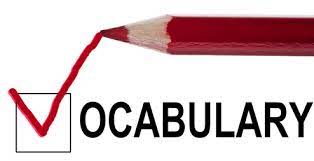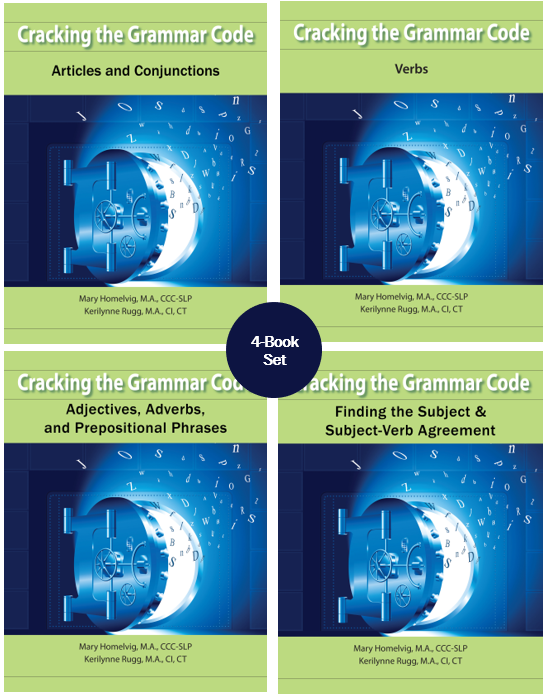Related Products
For Professionals
- Amplification
- Assessment of Student Skills, Challenges, Needs
- Early Childhood: Infants, Toddlers, Preschool
- Hearing Loss – Identification, Impact and Next Steps
- IDEA Law Summary Information
- Language and Speech Development Issues
- Legal Issues in Serving Children with Hearing Loss
- Listening (Auditory Skills) Development
- Planning to Meet Student Needs
- Self-Advocacy Skills for Students with Hearing Loss
- Self-Concept: How the Child with Hearing Loss Sees Himself
- Social Skills
- Speech Perception & Learning
Related Teacher Tools Takeout Items
Vocabulary Essentials to Language and Reading Development
 It’s well documented that children with hearing loss are deprived of essential learning because of the lack of incidental language learning. But what exactly does that mean and what are the implications on vocabulary? Vocabulary is an essential piece of the reading process. Phonemic awareness, phonics, vocabulary, fluency and comprehension are the threads that weave the literacy fabric for language, writing, and reading development. The underdevelopment of any one of these critical elements of literacy will have an impact on reading comprehension and delay a student’s ability to develop language and reading adequately.
It’s well documented that children with hearing loss are deprived of essential learning because of the lack of incidental language learning. But what exactly does that mean and what are the implications on vocabulary? Vocabulary is an essential piece of the reading process. Phonemic awareness, phonics, vocabulary, fluency and comprehension are the threads that weave the literacy fabric for language, writing, and reading development. The underdevelopment of any one of these critical elements of literacy will have an impact on reading comprehension and delay a student’s ability to develop language and reading adequately.
|
“Vocabulary is essential for communicating, reading, thinking, and learning. In comparison to typical hearing peers, students who are deaf or hard of hearing demonstrate vocabulary knowledge that is quantitatively reduced.” (Luckner JL, Cooke C.) |
An exhausting amount of research in the field of deaf education and vocabulary development indicates that students with hearing loss have historically had a deprivation of language due to lack of vocabulary exposure. In addition to language deprivation, reading development is stalled due to the lack of vocabulary development.
What does that mean for teachers of the deaf and hard of hearing?
EXPLICIT DIRECT INSTRUCTION!
Explicit direct instruction in the area of vocabulary development is a must for students with hearing loss. Strategies that build a student’s vocabulary are a must if the student’s overall reading scores are below average.
The student should be able to:
- say/sign the word
- recognize it in print and in visual representation
- discuss the word’s multiple meanings, and
- use it in its various contexts.
Oftentimes, students are taught to use techniques that don’t always work with students with hearing loss. For example, the use of context clues is a technique that works if the students understand the other words in the sentence. If the student isn’t familiar with the words that surround the unknown vocabulary word, then context clues are of no use as a technique to learning new words. Therefore, the use of additional techniques are a must.
Techniques for Vocabulary Development
 1. Scaffolding– Learning the meaning of a new word is more effectively taught when students can relate new words to prior knowledge. Effective teachers relate new vocabulary to what a child is likely to already know rather than to a dictionary or glossary definition. For example, when teaching the word ‘severe,’ the student may learn it better when it is related to a personal experience (e.g. a severe injury) than to a story about the weather. For some students with hearing loss, teaching the word injury will be required while learning the word severe.
1. Scaffolding– Learning the meaning of a new word is more effectively taught when students can relate new words to prior knowledge. Effective teachers relate new vocabulary to what a child is likely to already know rather than to a dictionary or glossary definition. For example, when teaching the word ‘severe,’ the student may learn it better when it is related to a personal experience (e.g. a severe injury) than to a story about the weather. For some students with hearing loss, teaching the word injury will be required while learning the word severe.
2. Explicit Instruction – Put away your assumptions about what you think the student knows and teach to be sure the student can say/sign the word, recognize it in print and in visual representation, discuss the word’s multiple meanings, and use it in its various contexts.
3. Discussion – For deeper understanding, discussion is paramount. The term “discussion” is not to be confused with “questioning.” Discussion, in a group setting, involves questions or comments going from student-to-student with the teacher acting as a facilitator where questioning usually goes from teacher-to-student, back to teacher, and then to another student, with content being more strictly controlled by the teacher.

Discuss:
-
- the definition
- multiple meanings
- produce synonyms and antonyms
- practice using the word in reading and writing, and
- provide examples and non-examples of appropriate use of the word.
4. Visual/graphic organizers– Visual/graphic organizers show relationships between words and make information easier to manage. Our students need to be able to identify attributes and categorize words in various ways. Deaf and Hard of Hearing students rely heavily on VISUALIZATION techniques, so making vocabulary visible will help them retain information.
Some types of visual organizers include Venn diagrams, flow charts, KWL charts, sequential organizers, semantic maps, and graphs. Also consider our Vocabulary Enhancement Simple Picture Glossary.
5. Repetition, repetition, repetition – Repetition is necessary for students to master vocabulary words. Along with repeated exposure, seeing and using a new word or phrase across content areas and activities will help deepen word knowledge. Up to 12 exposures may be necessary to develop deep understanding of a new word, and students who struggle with reading may need additional opportunities (Easterbrooks & Beal Alvarez, 2013).
Evidence Base for Effective Practices
|
A student that develops vocabulary at a slower pace is less likely to perform on grade level. When this happens, it has occurred that these students get diagnoses to have a learning disability because of the poor performance on grade level vocabulary assessments. Teachers have to provide these students with effective review, re-teach, and reinforce the meaning of basic vocabulary. Another task is to decide which words are most important to teach first. In most situations, there is limited time to give direct vocabulary instruction (August, Carlo, Dressler, & Snow 2005). |
- “Vocabulary acquisition includes the direct or indirect usage of vocabularies and vocabulary instruction strategies, and the learning of the meaning of a word through various activities” (Diamond and Gutlohn, 2006; Nagy, 1988).
- “Definitions and classifications regarding vocabulary instruction can be examined under two headings: direct and indirect vocabulary developing strategies” (Cramer, 2004; Johnson and Johnson, 2004; Rupley et al., 2009).
- “Direct vocabulary instruction includes both the direct interpretation of a word and instruction in word learning strategies in order to find the meaning of words” (Bennet et al., 2014; Baumann and Kameenui, 2004; Cramer, 2004; Johnson and Johnson, 2004).
- “Direct vocabulary instruction is significant, in that it helps the learning of words or terms within complex contexts, and words that are not used in daily life” (Diamond and Gutlohn, 2006).
- “Direct vocabulary instruction strategies in common usage are: a) defining, b) direct instruction of the strategies, c) matching the words with their synonyms and definitions, and d) use of graphic organizing.”
References
- Gallion, Tammy. Improving Vocabulary Comprehension for Deaf or Hard of Hearing Students Part of the Curriculum and Instruction Commons, Disability and Equity in Education Commons, and the Special Education and Teaching Commons.
- Improving Vocabulary Comprehension for Deaf or Hard of Hearing Students Part of the Curriculum and Instruction Commons, Disability and Equity in Education Commons, and the Special Education and Teaching Commons.
- Easterbrooks, S.R. & Beal-Alvarez, J. (2013). Literacy instruction for students who are deaf and hard of hearing. New York: Oxford University Press.
- Luckner JL, Cooke C. A summary of the vocabulary research with students who are deaf or hard of hearing. Am Ann Deaf. 2010 Spring;155(1):38-67. doi: 10.1353/aad.0.0129. PMID: 20503907.
- Guzin, Karasu, et al. “Vocabulary Developing Strategies Applied to Individuals with Hearing Impairments.” Educational Research and Reviews, vol. 11, no. 15, 10 Aug. 2016, pp. 1402-1414, 10.5897/err2016.2835. Accessed 31 Mar, 2022.
Author: Michelle Andros

